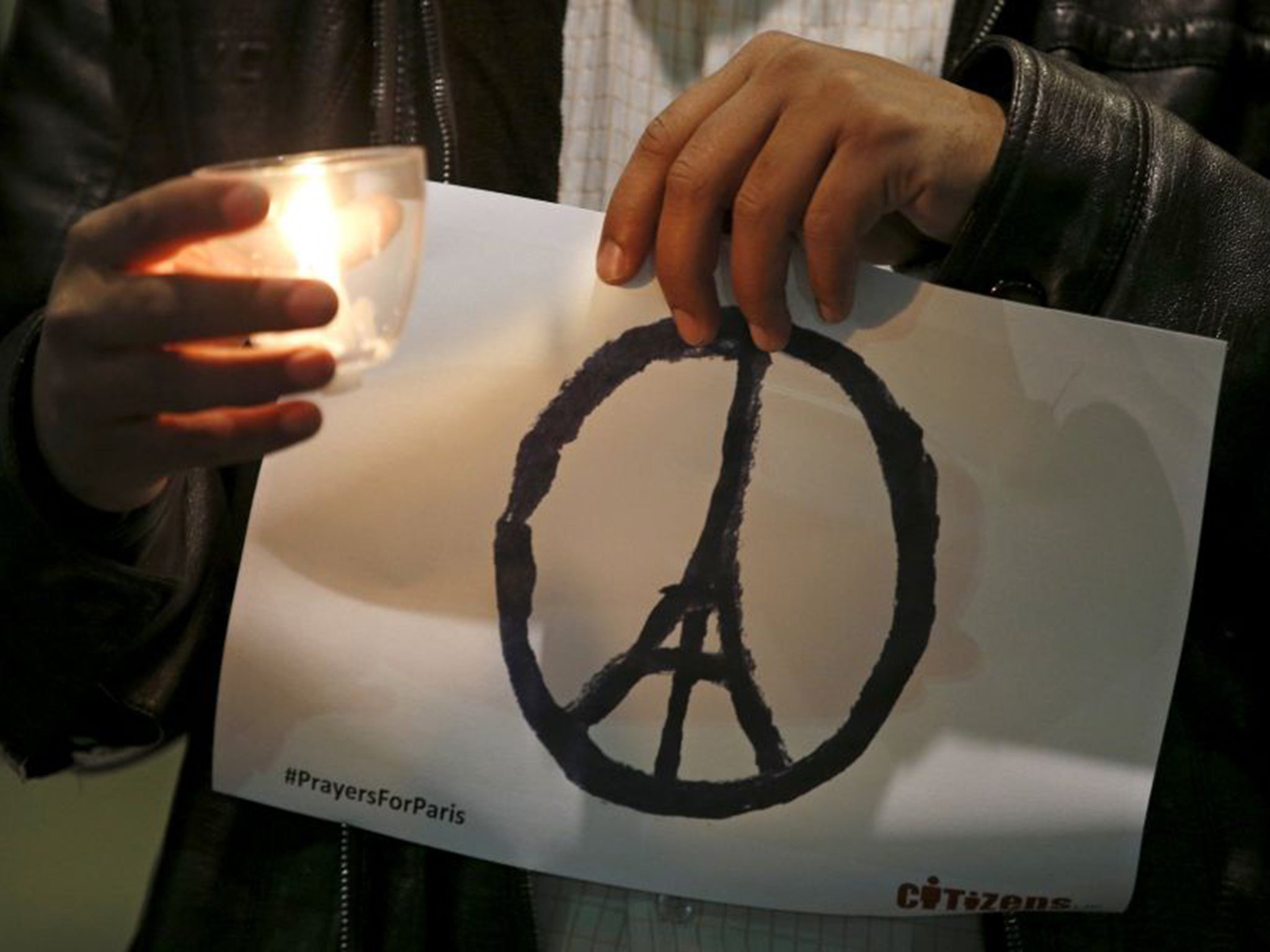Even in the twisted universe of Isis, they dream of Utopia
Leave Syria and Iraq, Palestine and Yemen in agony and the lure of violence at home or abroad edges up a notch each year


How can we imagine an end to terrorism, and to the hatred and injury that stoke it? This Easter weekend, such an outcome feels immeasurably distant. Add, in the past fortnight alone, the 31 victims in Brussels to the five on Istiklal street in Istanbul, the 37 in Ankara, and 60‑plus murdered by a petrol tanker blown up by Isis at Hilla south of Baghdad. Meanwhile, in The Hague, the Bosnian Serb psychiatrist turned psychopath Radovan Karadzic has received a 40-year sentence for the genocidal crimes against his Muslim neighbours that, in the mid-1990s, did so much to reboot Islamist jihad.
A decade before the invasion of Iraq, Western apathy as Sarajevo burned and Srebrenica bled – coupled with Russia’s two pitiless wars in Chechnya – gave the zealots their war cry. The two most battle-hardened 9/11 hijackers, Khalid al-Mihdhar and Nawaf al-Hazmi, were veterans of the Bosnian Muslim counterattack on Karadzic and his mass-murdering thugs. Osama bin Laden rated them highly for their Balkan stripes.
After 9/11, our state of endless war began. We avert horror-sated eyes and pray that the next bomb will detonate in the adjoining carriage or the other terminal. Interminable combat with ever-evolving enemies stretches beyond the horizon. In a time of random massacres, who dares to think of a route into hope?
This week, I remembered a visit I paid to an extraordinary figure who, in the bleakest of conditions, tries to do just that. On a brisk May morning in the Judaean hills, I crossed from Jerusalem into the West Bank through the Qalandiya checkpoint and went up to breezy Ramallah: a bustling city perched on healthy heights, but now encircled by Israeli settlements. Raja Shehadeh, the Palestinian author and lawyer, built a house for himself here, where Swiss chard and tomatoes, roses and delphiniums flourish in the garden.
Shehadeh has not only pursued countless human rights cases in the courts. He has also borne witness to the cruelties and absurdities of occupation in a string of lyrical, humane and quietly fervent books. Also an eminent lawyer, Shehadeh’s father took the first secret steps towards a “two-state solution” in the region, along with the Israeli diplomat (and undercover agent) David Kimche. The Shehadehs had come from east of the Jordan to settle in Jaffa. Their family history belongs to a world without the barriers and borders of today.
After we had driven and walked around his beloved hills, now crisscrossed by the concrete and barbed-wire geometry of settlement and occupation, Shehadeh told me about a short work he had just finished. Not a journal or essay, it took the form not just of fiction but of the wildest fantasy. In 2037: the Great Upheaval, he had envisaged a Middle East at peace. “I got so tired of living in the present,” he said. So he fantasised a better place.
In it, the humming trade and busy traffic of the lost Ottoman Empire now reconnect Baghdad with Beirut, Damascus to Cairo. High-speed trains whizz every half hour from (say) Istanbul to Jerusalem. Steel fences have fallen and mental boundaries crumbled, but every people and faith has a secure and stable home. In the tormented present, rather than the Utopian future, Shehadeh still believes – against the odds – in twin independent states for Israel and (unoccupied) Palestine. Hemmed in on all sides by military hardware and the settlers’ fortress-like estates, he walked these biblical pathways and had his vision of hope.
Fix the Middle East, and you will not banish the impulses of violent self-assertion and revenge from every deprived kid with a Muslim background fuming silently in Paddington or Molenbeek. Dogma-driven resentment has its own twisted logic. Home-grown burdens of joblessness, poverty and discrimination amplify the voices of the website warriors. Back in Bosnia, where the new-wave jihadis of the “Mujahideen Battalion” first established a European foothold, Isis recruiters have again found fertile ground. More than 200 young Bosniaks have recently joined the self-styled “caliphate” of Isis. And Bosnia has a youth unemployment rate that tops 60 per cent: the highest in the record-keeping world.
Fix the Middle East, though, and the patrons of bedroom zealots lose their phoney cloak of righteousness. The “push” factors of penury or prejudice at home must meet the “pull” of a greater cause under some brave, black banner. We can seek to shrink the former by social inclusion in fairer and mutually respectful cities. But leave Syria and Iraq, Palestine and Yemen in agony and the lure of violence at home or abroad edges up a notch each year.
Diplomacy has failed the region’s people. True, Barack Obama will leave office with an Iranian nuclear deal under his belt. That took years and may yet prove fragile. Elsewhere, Saudi autocrats and Israeli hardliners carry on repressive business as usual with the blessing of their friends in the West. As do the uniformed killers in Egypt and the Gulf who dug the grave of the Arab Spring and stuffed it with innocent cadavers. Even Bashar al-Assad finds himself, with help from Putin and his grovelling apologists in the Western media, sliding back into favour. He should be in the dock in The Hague. Outrage or adversity can never force anyone to slip over the Syrian border to fight or (worse) strap on a suicide belt in the metro. But those who contemplate such crimes seldom forget to pack idealism in their knapsack of excuses.
So why not resort, as Raja Shehadeh did, to science fiction for a chink of light? For anyone who wants to drain the pools of injustice and misrule where sympathy for terrorism breeds, his vision of peace and unity in 2037 has a hair-raising prelude. In this future, apocalypse precedes reform. An earthquake triggers a nuclear accident that lays parts of the region waste. Dire emergency compels sworn foes to co-operate or perish. Let’s hope it never comes to that, with some collapsed reactor as the last-ditch vehicle of agreement.
You might, however, conceive of some sub-doomsday scenario that would force mutually suspicious players from Jeddah to Erbil to line up on the same team. Climate change and the depletion of resources, for instance, may not only exacerbate regional strife but cause it. Serious studies have correlated seasons of severe drought with the rise of Isis. Could harmony as well as conflict flow from the worsening water crisis of the Middle East?
Shehadeh is hardly the first author to dream of these lands as a haven of togetherness rather than a hellhole of division. The intellectual architect of Zionism, Theodor Herzl himself, fondly planned for multicultural harmony in his Jewish homeland. He too wrote a Utopian novel about this territory: Altneuland, published in 1902. In Herzl’s future Palestine, the “old new land”, Jewish migrants from Europe build a modern, progressive welfare state as a joint venture with their Arab, Armenian and Greek neighbours. Yes, it sounds like the patronising fantasy of a frock-coated Viennese journalist who knew everything about cafés on the Ringstrasse and nothing about smallholdings in Samaria. But Herzl makes tolerant pluralism the cornerstone of his state. His plot even pivots on the electoral defeat of a racist rabbi who wishes to strip non-Jews of equal rights.
These Levantine pipe dreams matter because Isis itself has grown into the twisted flip side of a Utopian dreamland. Accounts of its propaganda output confirm that it diffuses uplifting images of community, welfare and civic provision more often than torture-and-decapitation porn. In an investigation on behalf of Nato, Professor Shahira Fahmy found that only 5 per cent of propaganda items from the “caliphate” depicted bloodshed, as opposed to street-cleaning, garbage collection, clinics, blood donation and so on.
For the Quilliam Foundation, Charlie Winter identified 53 per cent of Isis reports as “Utopian”, with only 2 per cent pure gore. Its recruits kill, and die, for the mirage of a holy state. It offers the twin gratifications of supportive solidarity among “believers” and savage violence against all “infidels”. We rail at the sadism of terrorists. We should gasp at their sentimentality as well.
Back on the contested ground of the Middle East, the postponement of Utopia leaves limitless pain in its wake, both near at hand at far away. On the ground and in the mind, the walls and barriers remain. For my journey back from Ramallah, Raja Shehadeh advised me to cross Qalandiya as a pedestrian. I would have a small taste of the daily frustration and belittlement of Palestinians who need to move across these lines for family and work. Strewn with cigarette butts, the wire-walled passageways and cattle-pen holding areas looked squalid as much as sinister. It turned out to be a quiet afternoon at Qalandiya, but waits here can easily stretch to five or six hours. Fights and riots sometimes break out.
Beyond the lines of tall turnstiles and the battered scanners, three young women soldiers, national-service age, slowly processed the queue. It all felt very Wizard of Oz-ish: that fearsome architecture of control and surveillance hid a trio of bored time-servers.
After they had checked my documents, some vague memory of a training session kicked in, and one of them merrily chirruped: “Have a nice day!” As this shadowed spring begins, people from Brussels to Bethlehem who dream of peace will be hoping against hope for that.



Join our commenting forum
Join thought-provoking conversations, follow other Independent readers and see their replies